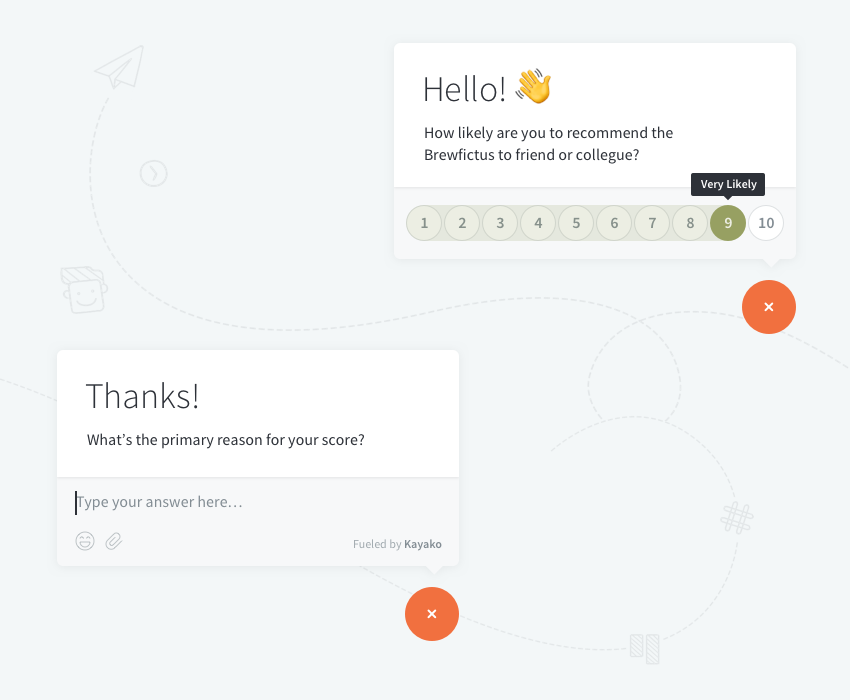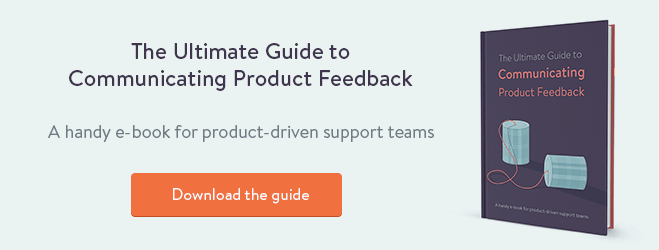This is a guest post from our friends at Typeform. Paul Campillo will show you the value of choosing NPS as your next customer feedback questionnaire.
Every company wants loyal customers. Sure, sales are great, but nothing beats sales from repeat customers. That’s the goal of every business. Not a gazillion “maybe” fans, but diehard fans who’ll gladly pay, over and over again.
Loyalty takes time. It takes energy, effort, and a willingness to understand. This is hard work for every entrepreneur.
But here’s the secret. And I’m still amazed at how too many people and brands neglect this fundamental driver of every great business: feedback.
You’re swimming in an ocean of feedback
Feedback comes at you from work, home, and just about every moment in between.
Most people within organizations struggle with feedback—either giving or receiving it. We avoid feedback because it potentially brings conflict. People love the status quo and will happily take the path of least resistance. Feedback can force tough decisions and unwanted changes in behavior.
But as a business, if you don’t heed quality feedback, you’re business will be a parking lot in 3 months.
Case in point. Fortune magazine published an article titled Why Startups Fail, citing post-mortems done on 101 startups.
The number one reason most startups fail (42%) is the lack of a market need for their product. That’s almost half.
But when it comes to your market, you should ask for feedback early and often. Doesn’t matter what stage of the business lifecycle you’re currently in—anywhere from concept to growth is fair game.
To get all this feedback, you’re going to need a tool, and I have just the one for you.
What is NPS?
The Net Promoter Score measures customer (and staff) loyalty by asking two simple questions:
The first question is this:
On a scale of 1-10, how likely are you to recommend [your product/service/company] to another person?
Pretty straightforward, right?
The second question gives space for people to share how they really feel:
What’s the primary reason for your score?
 Next, you’ll want to segment your respondents into three groups.
Next, you’ll want to segment your respondents into three groups.
Segment and look for product satisfaction in your survey
After receiving their responses, you can place people in one of three groups:
- Promoters, between 9 — 10
- Passives, between 7 — 8
- Detractors, between 0 — 6
Promoters evangelize your brand. If you have tons of Promoters, then you’re in good, but rare company. They’ll provide consistent revenue and keep coming back for more. But they won’t stop there. Promoters actively refer others to your brand, and bring in more business. In the end, Promoters cost you less over their lifetime and are generally low maintenance.
Passives got what they came for, but they have no allegiance to your brand. They can live with or without you. If Passives see a better deal or discount from a competitor, they’re likely to defect.
Detractors are dangerous to your business. I’ve seen reports out there saying that Detractors could spread their bad juju from 9 to 22 people (and even if it were only 4 or 5, that’s still bad for you).
Detractors can be demanding on your staff, possibly affecting their overall workday and productivity. Bottom line: detractors kill profits and hurt staff morale, so you’d better address them quickly.
Ok, now that you have all this feedback, what do you do with it? It’s time to close the feedback loop.
Closing the loop on customer feedback
Fred Reichheld, author of The Ultimate Question 2.0 and founder of the Net Promoter Score, believes that the single most important key to meaningful progress is to create more Promoters and fewer Detractors.
“The key is that the closed-loop feedback, learning, and action must involve everyone, from customer-facing employees through the most senior executives.” – Fred Reichheld, Bain & Company
Who are your decision makers? Do you empower your customer support team to fix problems on the spot? Can you prioritize software fixes or features if it’s a big enough problem for customers?
The companies that achieve outstanding results with NPS build customer feedback into their regular daily operations, and then close the loop by talking directly to customers and taking appropriate action.
How to handle negative feedback from questionnaires
Some problems just need a quick fix, while others may cause you to rethink policies and procedures. Either way, you have to learn and close that loop or you can kiss your retention numbers goodbye.
Cheryl Pasquale reviews the latest NPS reports at Charles Schwab each day. She sorts through scores and reads every comment. When she comes across a customer who gave a poor rating for a delay in posting a transaction to his account—Pasquale makes a note to contact him that day.
Leading NPS practitioners such as Charles Schwab and Apple try to contact every Detractor within 24 hours, according to Reichheld.
Working with front-line staff, managers can get more context of what the problem is before phone calls are made. It also helps when the event is still fresh in a customer’s mind so they can pinpoint specific frustrations. A lot can be forgotten in a week, so it’s important to make contact right away.
Closing the feedback loop can reveal insights that influence your product roadmap or maybe revamp your current onboarding process, or improve customer support workflows. It can affect long-held policies and procedures.
You may see patterns that alarm or delight you, but the key is to act on that feedback and learn fast. Let people know you heard them and that you’re on it.
Final thoughts
Once you decide to implement NPS, you should focus more of your attention on Detractors and Promoters. Why? Because if you address Detractors’ concerns and do more of what Promoters love, then you will drive people up the Likert Scale, as it were. If you can push 3s to 6s (assuming they stick around), and 6s become 8s during their patronage, then you’re learning.
But remember. The goal is to learn, adapt, and improve. Loyalty doesn’t come easily, but if you win it, don’t take it for granted. Make sure you’re constantly learning from your customers and your business will stay relevant.

About the author
 Paul Campillo is a storyteller at Typeform (not your daddy’s forms). When Paul’s not commuting to Barcelona from Oakland, he thinks about the future of business, HX, storytelling for systems change, and exploring cosmic consciousness.
Paul Campillo is a storyteller at Typeform (not your daddy’s forms). When Paul’s not commuting to Barcelona from Oakland, he thinks about the future of business, HX, storytelling for systems change, and exploring cosmic consciousness.
